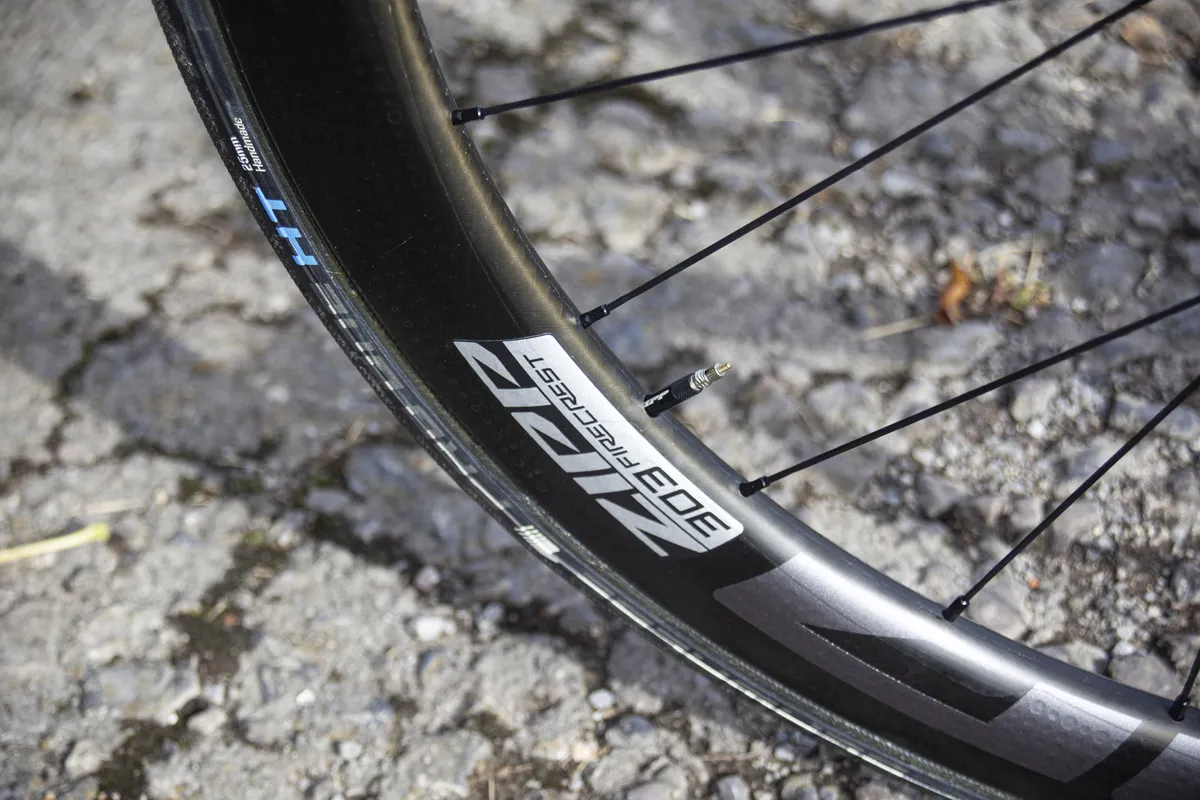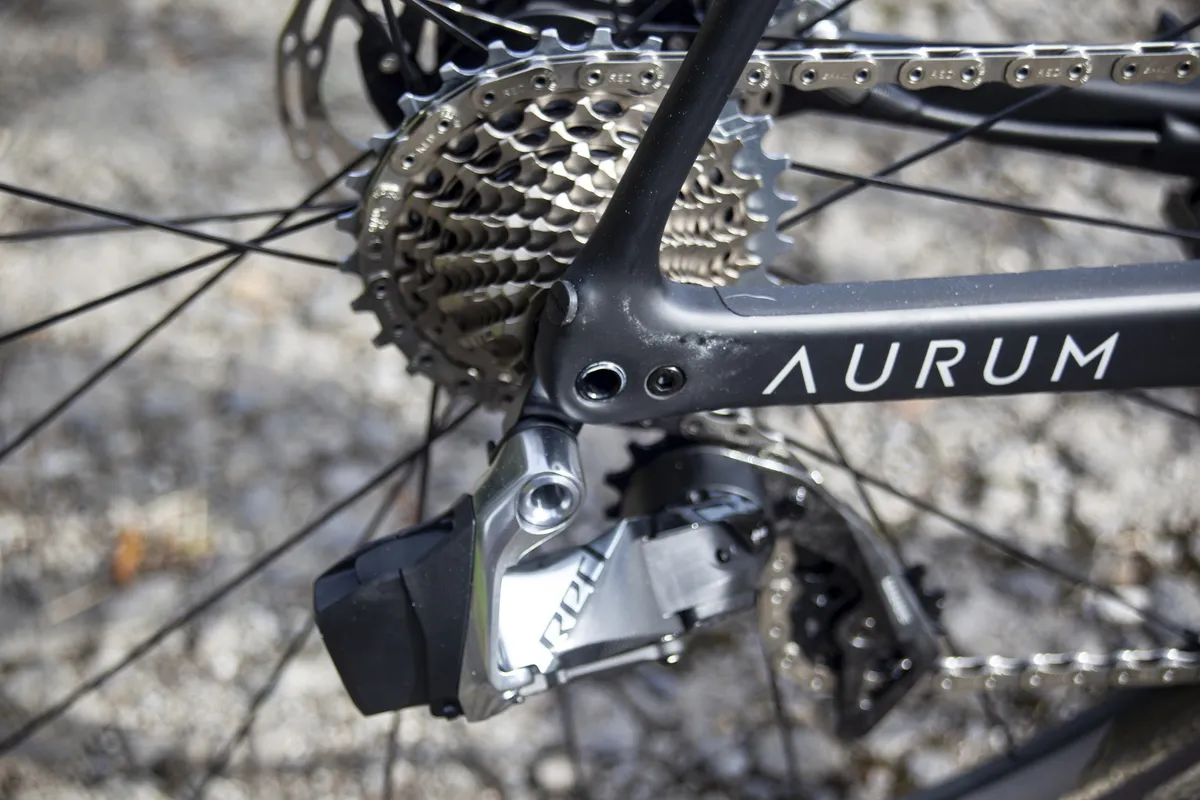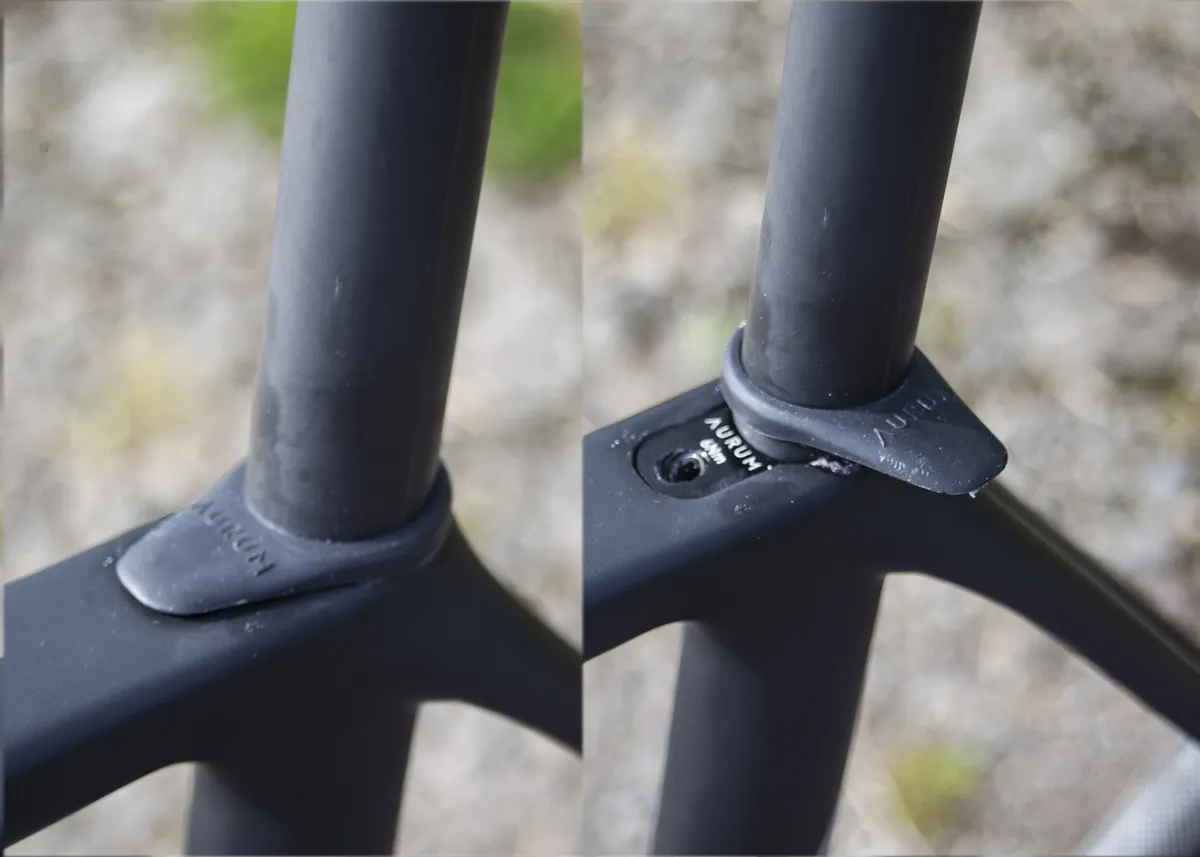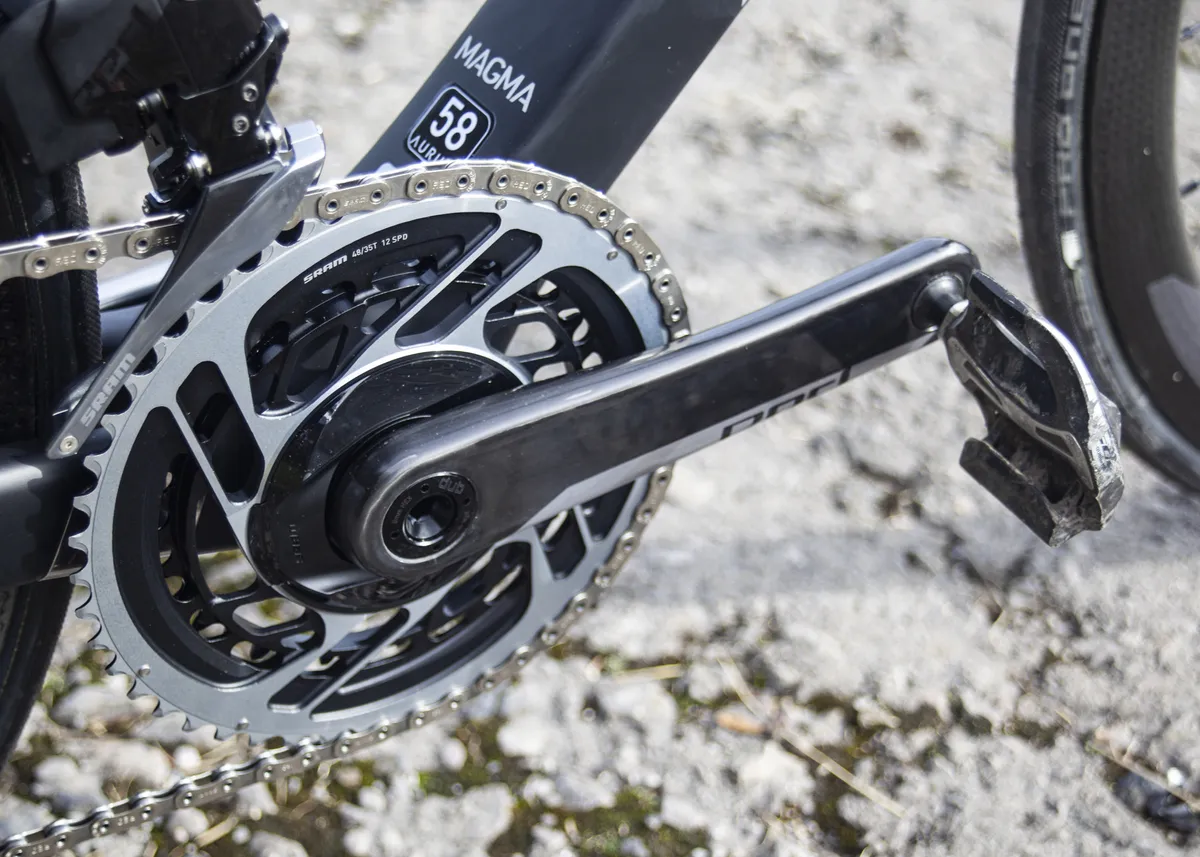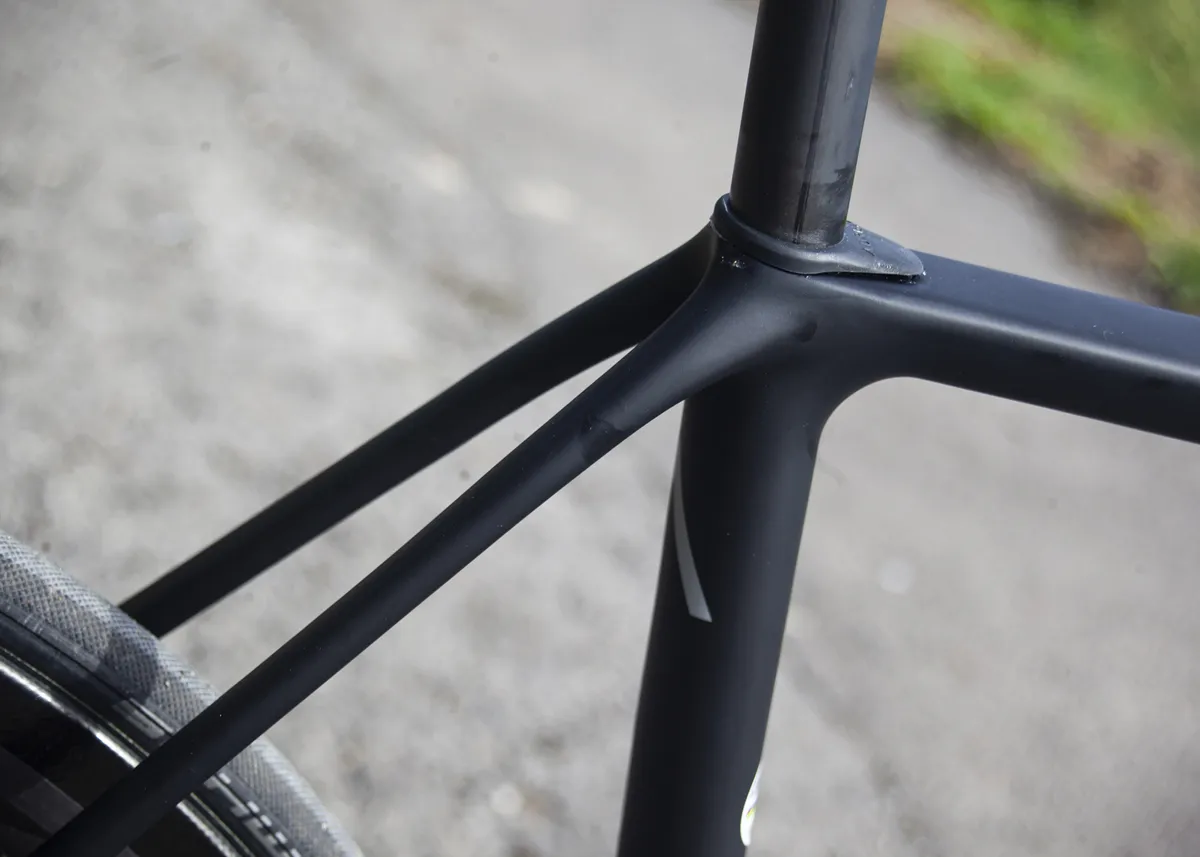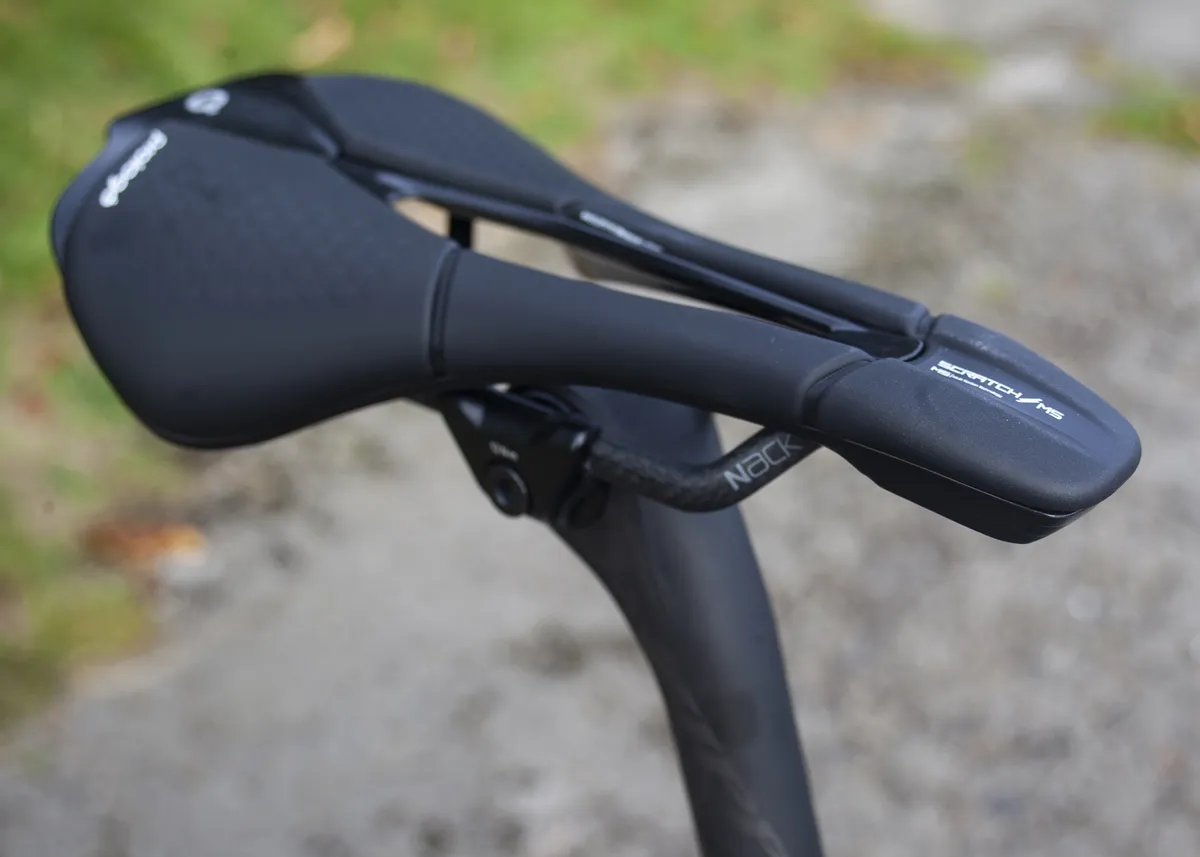With nine Grand Tour wins and 31 years of racing between them, El Pistolero and Ivan the Terrible should know a thing or two about bikes and have joined forces to create the new Aurum Magma – an all-round road bike with a climber's DNA.
Basso and Contador spent the twilight of their professional cycling careers at Trek Segafredo; Contador racing and Basso part of the team's management.
It’s here that they forged a friendship, and over the years both have ridden some of the best bikes of the era – we’re talking Cannondale SuperSix EVO, Cervélo R-Series and S-Series, Specialized Tarmac, Giant TCR, Trek Madone, and more.
Their new bike brand, Aurum (Latin for gold), is debuting with the Magma; a premium race bike that's designed to be the fastest all-round road bike "born from experience".
Six things you need to know about the Aurum Magma
- As part of the final testing of the bike, Contador took the Magma Everesting
- The bike has been ridden by their pro riders over more than 500,000km ahead of launch
- It is available in three premium models with SRAM Red AXS or Shimano Dura-Ace Di2 and builds centred around Zipp, Enve and Lightweight wheels and components
- Complete bike prices start at €9,799, while the frameset is €4,099
- A 54cm frame weighs in at a claimed 805g
- The frame uses six different grades of carbon fibre in its construction as well as multiple resins
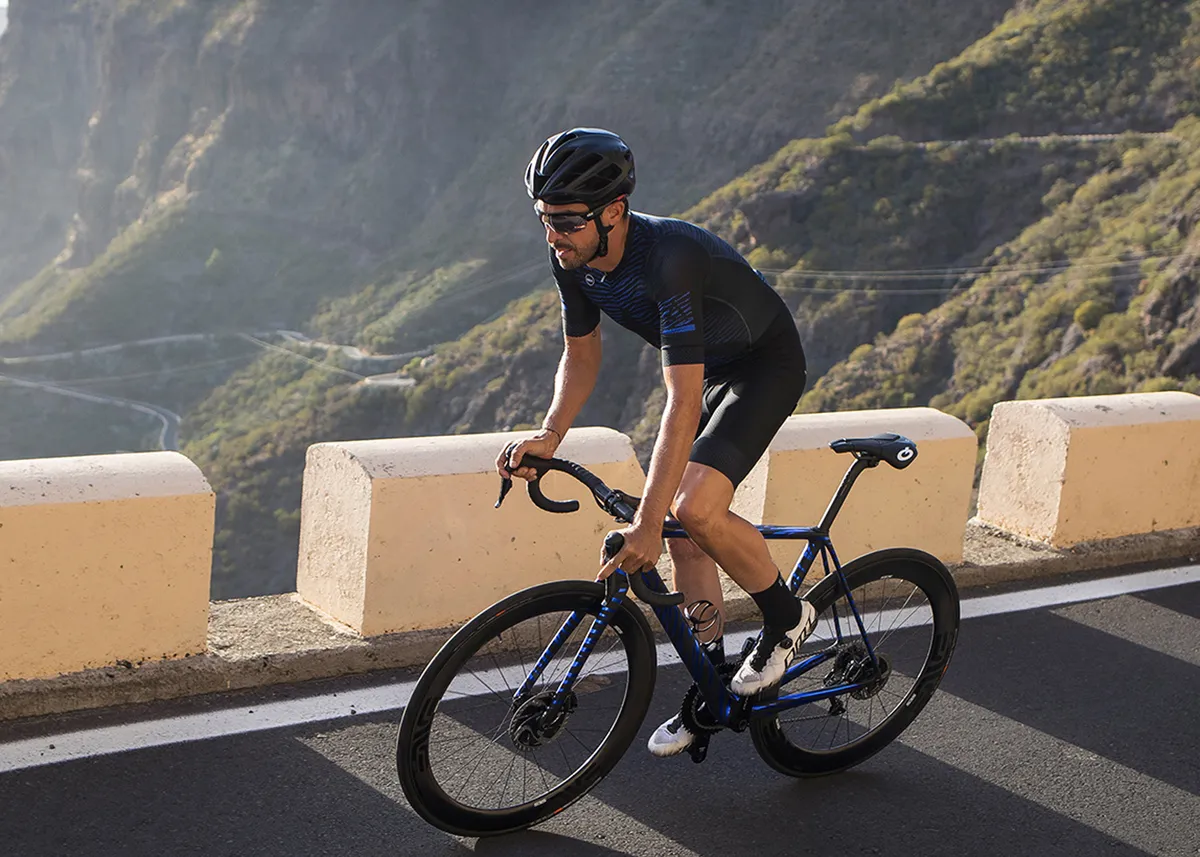
The Magma bike project started more than two years ago with the duo working with a newly recruited engineering team split across Spain and Italy to combine the thoughts and goals of both riders.
Contador explains: "We rode some sensational bikes in our careers, some great climbing bikes – some great on the flat, some comfortable, some lightweight – we dreamed to make a bike better than those bikes."
At first glance, the Magma (named after the volcanic Mount Teide in Tenerife where many of their training rides during development took place) looks well, quite normal: the frame shape is a traditional two-triangle affair and the integration is less than we’ve seen from many recently launched models.
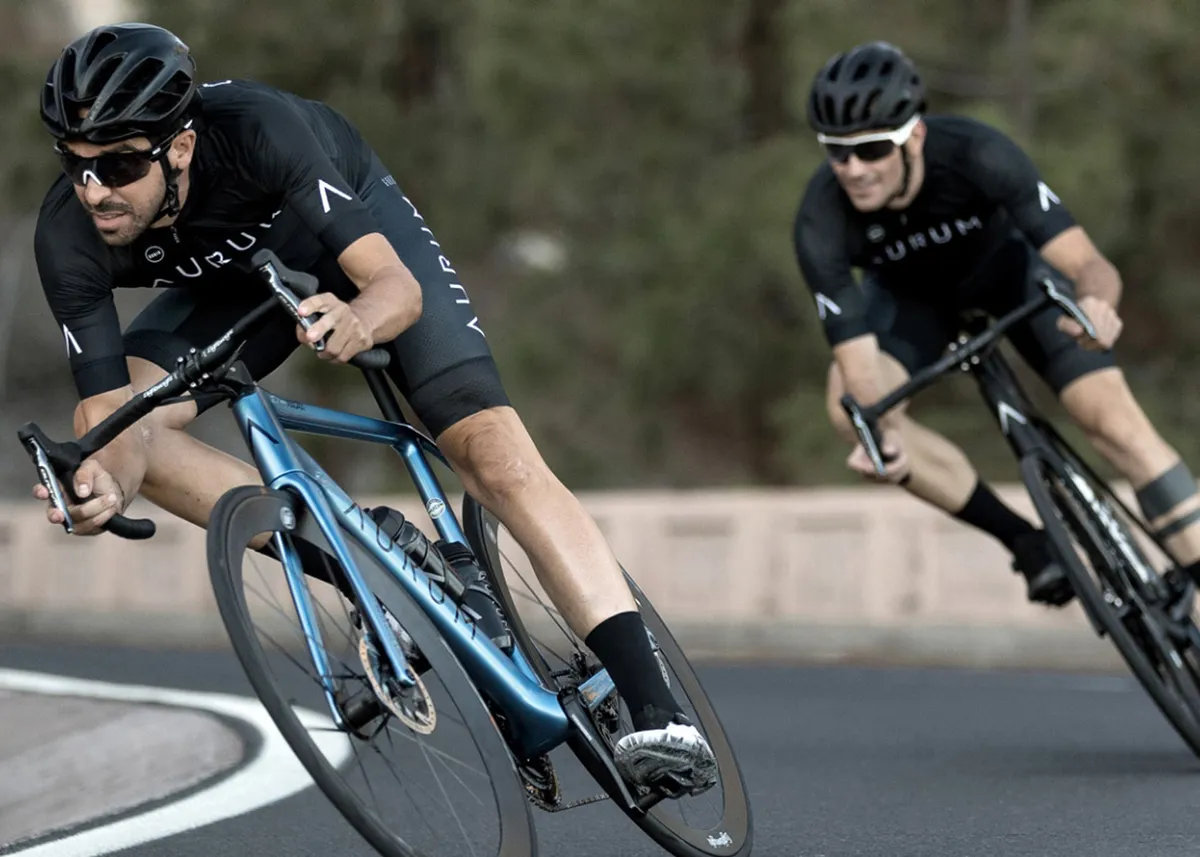
This, it seems, comes from the experience of the two riders during their careers. They say the bike is the result of riders' needs rather than pure aerodynamics or on-paper solutions.
Contador explains: "Throughout our career we would ask for small adjustments, small changes that would mean changing a stem, a different handlebar choice, or seatpost. So, one of our first priorities was to allow the rider to make sure they are using what suits them.
"A bar I like, you may not, so we stayed with a standard stem size and a standard 27.2 round seatpost. This gives all of the choices to the rider, not the company. Riders are all unique and complex, so having one design for all is never going to work, it’s something we have experienced throughout our careers."
Fast for every rider
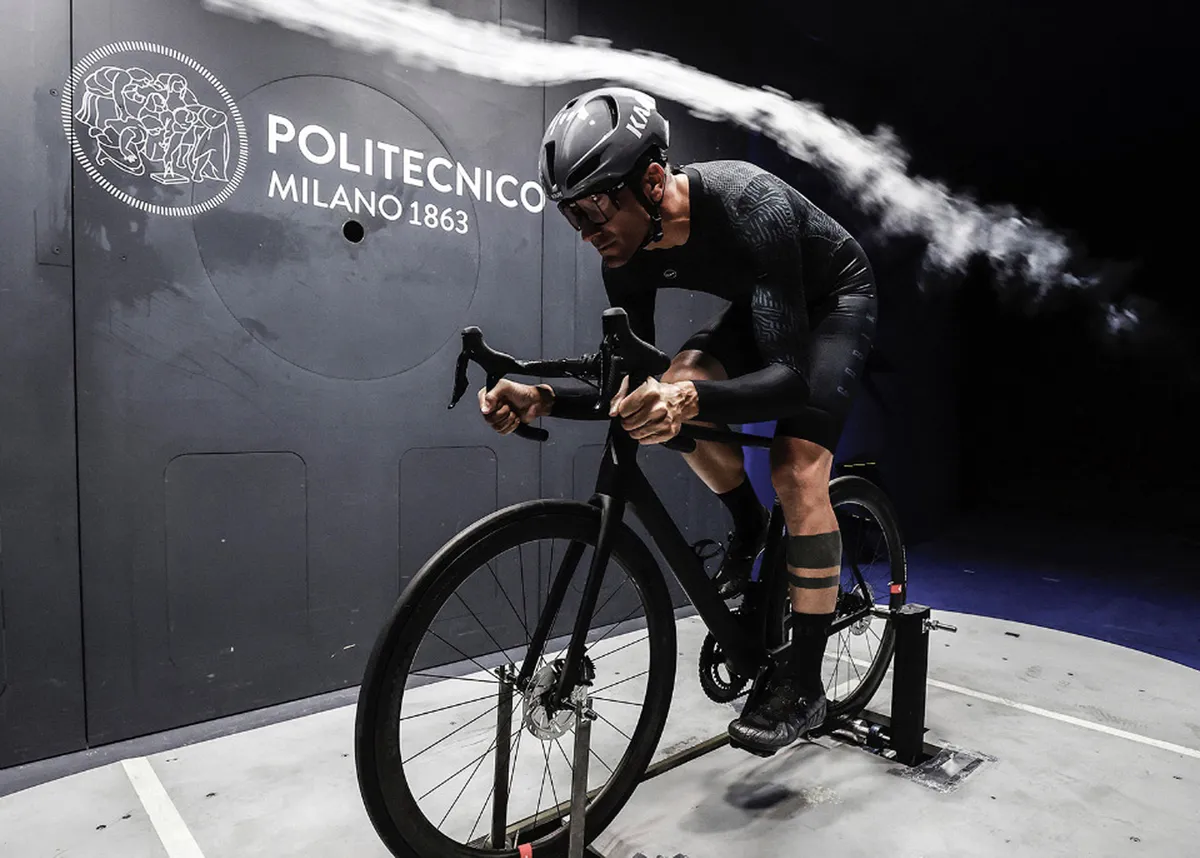
Basso and Contador are at pains to explain that riding as a pro means switching between bikes on consecutive days on a Grand Tour: "You can have a fast bike for the flat, a light bike for the climbs, even a comfortable bike for classics, it’s not ideal though, especially when you don’t have the pro team behind you," Basso says.
Contador is a bit more frank: "For me personally, switching between an aero bike one day and a light bike the next caused me a lot of problems, a lot of pain, not what you want when you are trying to win a Grand Tour."
Therefore, Basso tells us the idea behind the Magma was a bike that "takes the good sensations of the bikes we rode as pros and combines them into one bike."
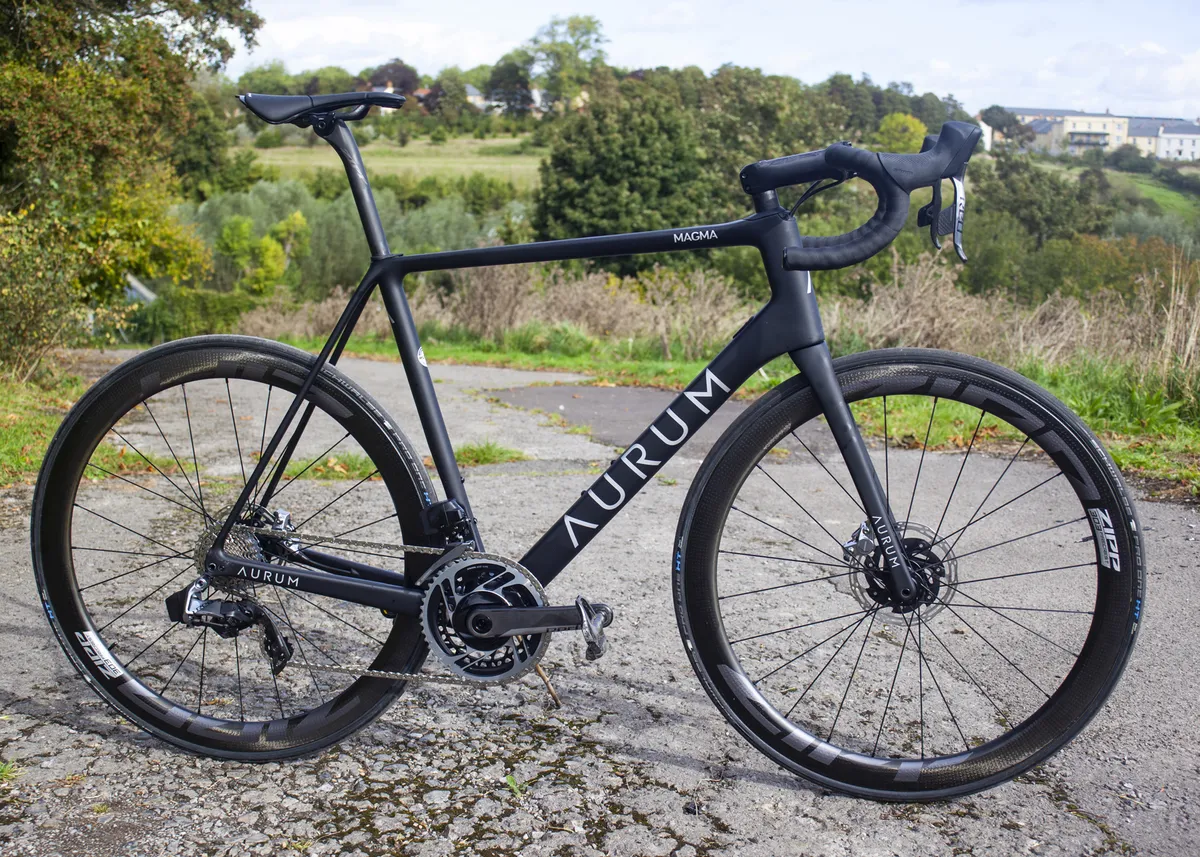
The key elements for the bike's design were stiffness, comfort, aerodynamics, and lightweight, with the final bike aimed at being a great all-rounder with climbing DNA – no doubt with a nod towards the two founders' riding styles.
That, it seems, is the justification for staying with a traditional two triangle design rather than the current trend for super-dropped chainstays.
Contador tells us from his experience that when you ride a bike with dropped stays on the climbs and are putting the power down it doesn’t have enough lateral stiffness for him. With a larger rear triangle he says you have a stiffer structure that's better for pedalling efforts.

Dropped stays are often used to improve aerodynamics and to allow freer movement of the seat tube/post to add comfort.
Basso and Contador counter this argument by using slender seatstays, constructed to allow for a little flex to absorb road shocks, and they also decided early on in the design process to go with a more traditional shape because, they say, anything behind the rider – aerodynamically speaking – is already in very disrupted air and gains here are minimal compared to the frontal area of the bike.
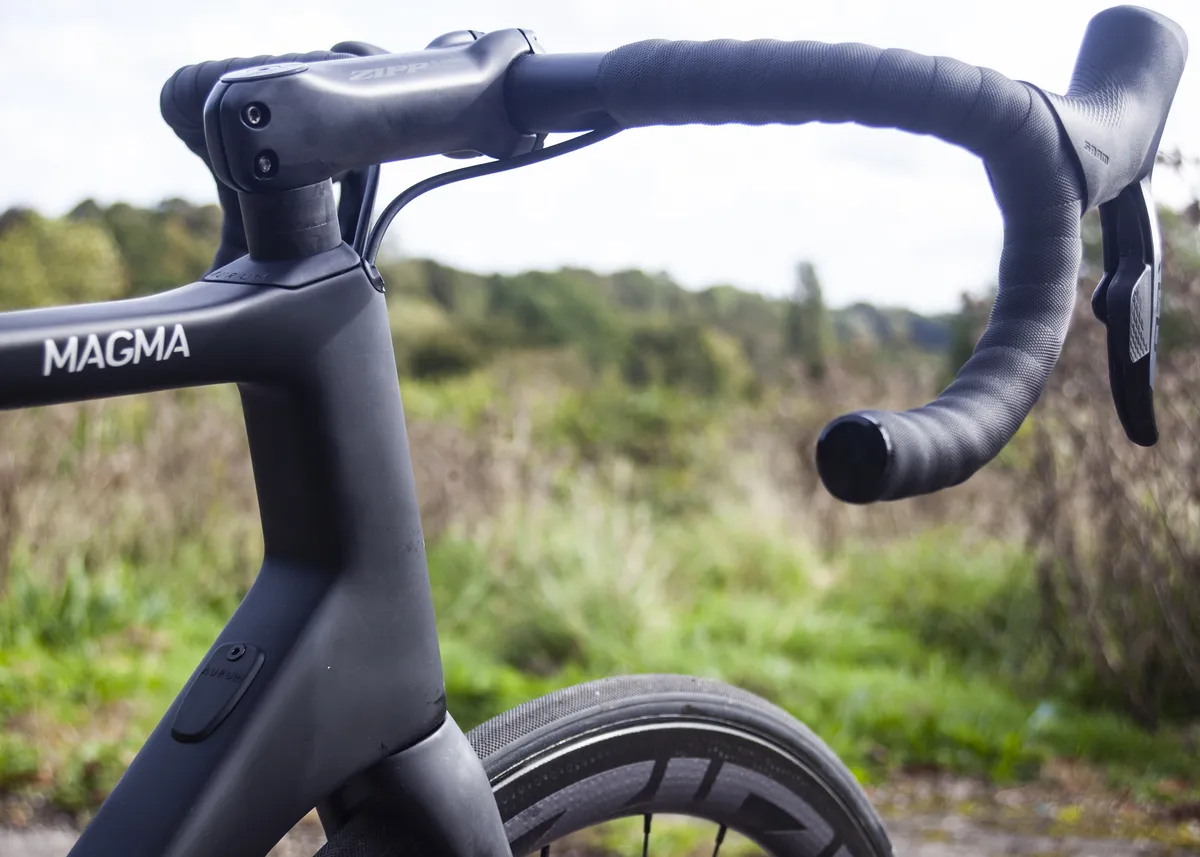
However, the front-end of the Magma is all about aerodynamics. The head tube and down tube are both designed around NACA (National Advisory Committee for Aeronautics) profiles – specifically 0024 for the head tube and down tube, 0021 for the fork legs for any aerodynamic nerds out there.
Like most modern aero tubing, these aero profiles have the long extended tails chopped (Kammtail profiles), These D-shaped tubes cheat the air into acting as if the long tapered tail is in place but make for a structurally stronger shape torsionally, and one that’s lighter.

The head tube features cable routing that runs down the front of a structure called the ‘head tunnel’. This design is apparently much simpler (and lighter) than most internal cable routing designs.
It means that the frameset can run a standard headset (a stainless steel set of headset bearings is included with the frameset) and the bike can run any stem and bar combination, which is reflected in the three model builds on offer that run Zipp, Enve and Lightweight bar and stem combinations.
Aurum Magma weight
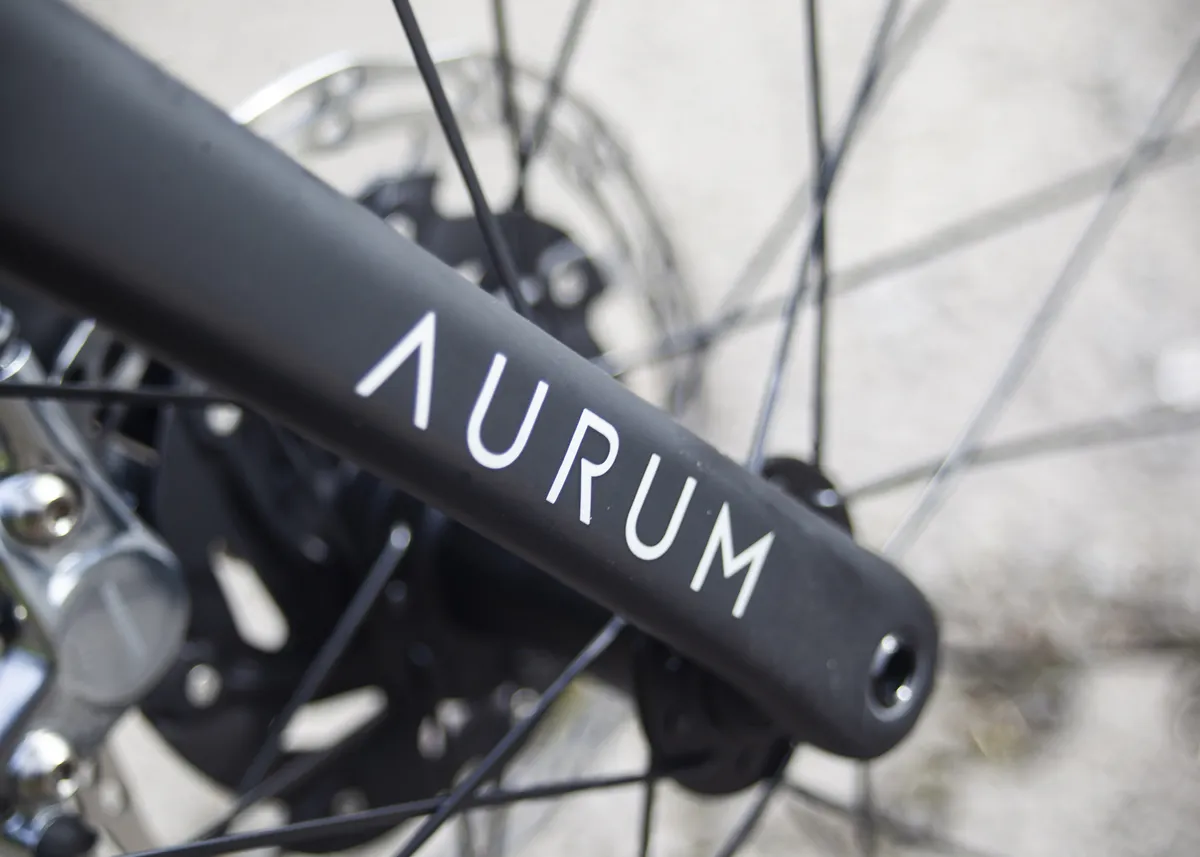
For a bike born out of the experience of two highly respected climbers and all-rounders, we expected to see some headline grabbing weights, and while the 805g weight for a 54cm frame is impressive it's hardly up their with the likes of many recent launches from Canyon, Trek, and Giant.
We asked Contador if Aurum has played it safe with the Magma’s frame: "Sometimes in my career you would see climbers trying to save 50g, 100g, 150g from a bike in any way to try and get an advantage, but, in my experience climbing, the geometry and stiffness is much more important. A bike that responds when you go out of the saddle is faster than something light that isn’t rigid. This is even more important on the descents.
"When we were doing the photography for the bike, at the top of the climb I said to the team I wish to ride down, and on this descent (my first time on this road) out of 13,000 Strava riders I placed fifth. That’s when I knew we had the bike I wanted. If we had tried to take out more weight from the frame it would have brought too many compromises and we would have a lighter bike, but never a better bike."
Aurum Magma geometry
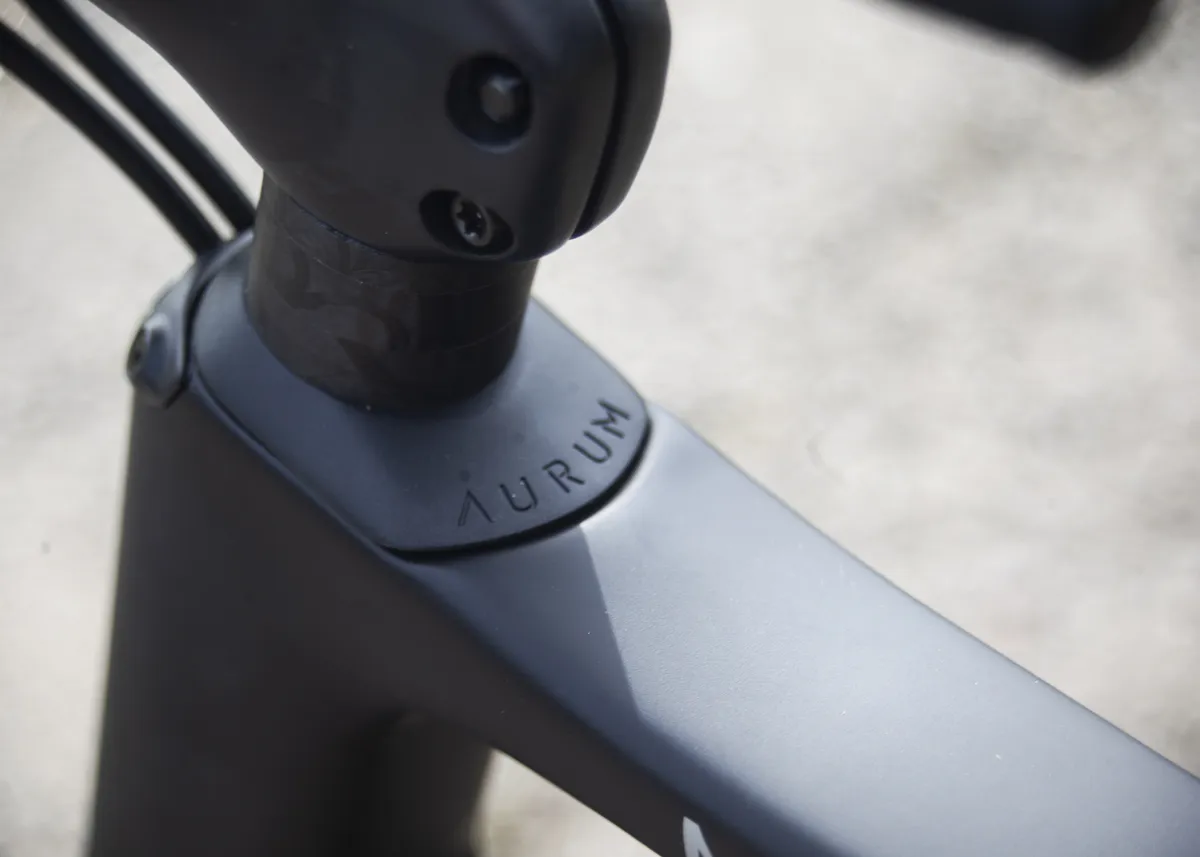
When it comes to geometry the Magma is, as you might expect, on the racier side of things. However, Aurum knows that the bike needs to be able to fit a wide range of riders, so each bike comes with two headset top race covers – one at 8mm for those who like a more slammed position and a taller 20mm cap for a slightly more relaxed ride that still maintains the clean looks of the bike.
The frameset’s geometry is optimised for 25 to 28mm tyres but has clearance for 30s. The bottom bracket drop of 71mm is across all sizes apart from the smallest 50cm, which should mean each bike size exhibits the same balance and weight distribution, according to Aurum.
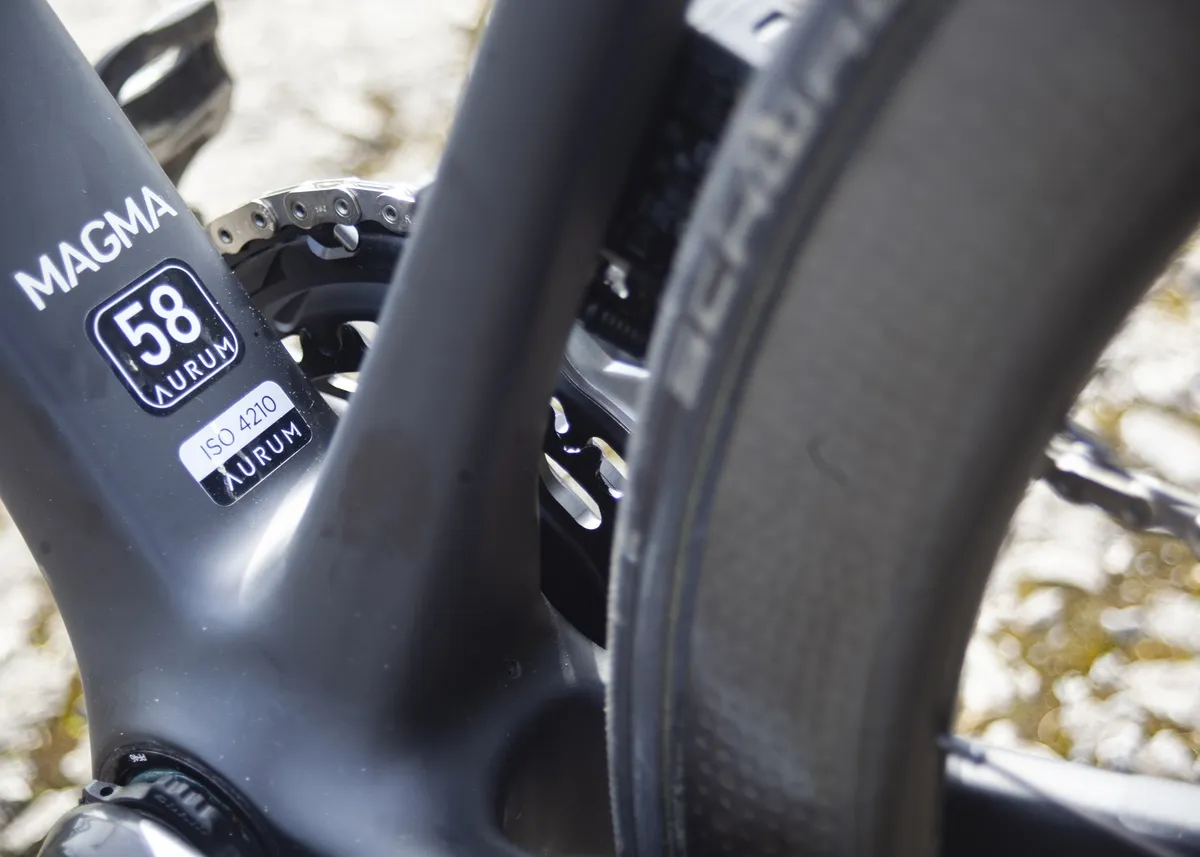
Unlike traditional bike sizes based around tube length (typically the top tube or seat tube), the Magma’s sizes are based on stack height, so a size 50cm has a 505mm stack, and a size 56cm a 567mm stack, etc.
Aurum says it is has sought to balance steering geometry between sizes, so that handling feel is consistent from one size to the next while avoiding any toe overlap. So smaller bikes get a shallower head angle and more fork offset and trail.
The physical tube diameters are different too, to better deal with the ways frames of different sizes withstand different loads and torsional forces. For example, Contador explains that “a taller rider on a larger bike has a higher centre of gravity measured from the bottom bracket than a shorter rider, so without even considering rider weight there are significant differences in forces.”
| Aurum Magma Geometry | ||||||
|---|---|---|---|---|---|---|
| Size | 50 | 52 | 54 | 56 | 58 | 61 |
| Stack (mm) | 505 | 525 | 545 | 567 | 589 | 615 |
| Reach (mm) | 370 | 376 | 384 | 392 | 400 | 408 |
| Seat angle (degress) | 74 | 73 | 73 | 73 | 73 | 73 |
| Top tube (mm) | 515 | 536 | 551 | 565 | 580 | 596 |
| Head angle (degrees) | 71.8 | 71.6 | 73 | 73 | 73 | 73 |
| Fork offset (mm) | 50 | 50 | 44 | 44 | 44 | 44 |
| Fork trail (mm) | 60 | 60 | 59 | 59 | 59 | 59 |
| Seat tube (mm) | 453 | 480 | 504 | 526 | 547 | 573 |
| BB drop (mm) | 74 | 71 | 71 | 71 | 71 | 71 |
| Front centre (mm) | 570 | 580 | 584 | 594 | 608 | 624 |
| Chainstay (mm) | 407 | 407 | 410 | 410 | 410 | 410 |
| Wheelbase (mm) | 965 | 979 | 980 | 993 | 1,008 | 1,024 |
| Standover (mm) | 728 | 750 | 782 | 803 | 826 | 850 |
Aurum Magma availability
Aurum bikes will be sold direct, but availability in bike shops hasn't been ruled out. In fact, the store at Velodrome Barcelona will have the Magma on sale.
We asked if the Aurum range would be expanding beyond this premium model and while nothing was confirmed, a lower price point is being looked into.
As for other bikes, an aero-design (TT bike) is on its way, but Aurum's next bike will be a gravel bike.
We have the SRAM/Zipp-equipped Magma with us to test, and while we haven't had time to properly test it ahead of launch, what we can say is our 58cm test bike tips the scales at 6.91kg and the brief rides we’ve had have impressed so far.
We’ll follow up with a full review as soon as we’ve got plenty more miles in – though probably not Everesting it like Señor Contador.
Aurum Magma range
Aurum Magma Enve
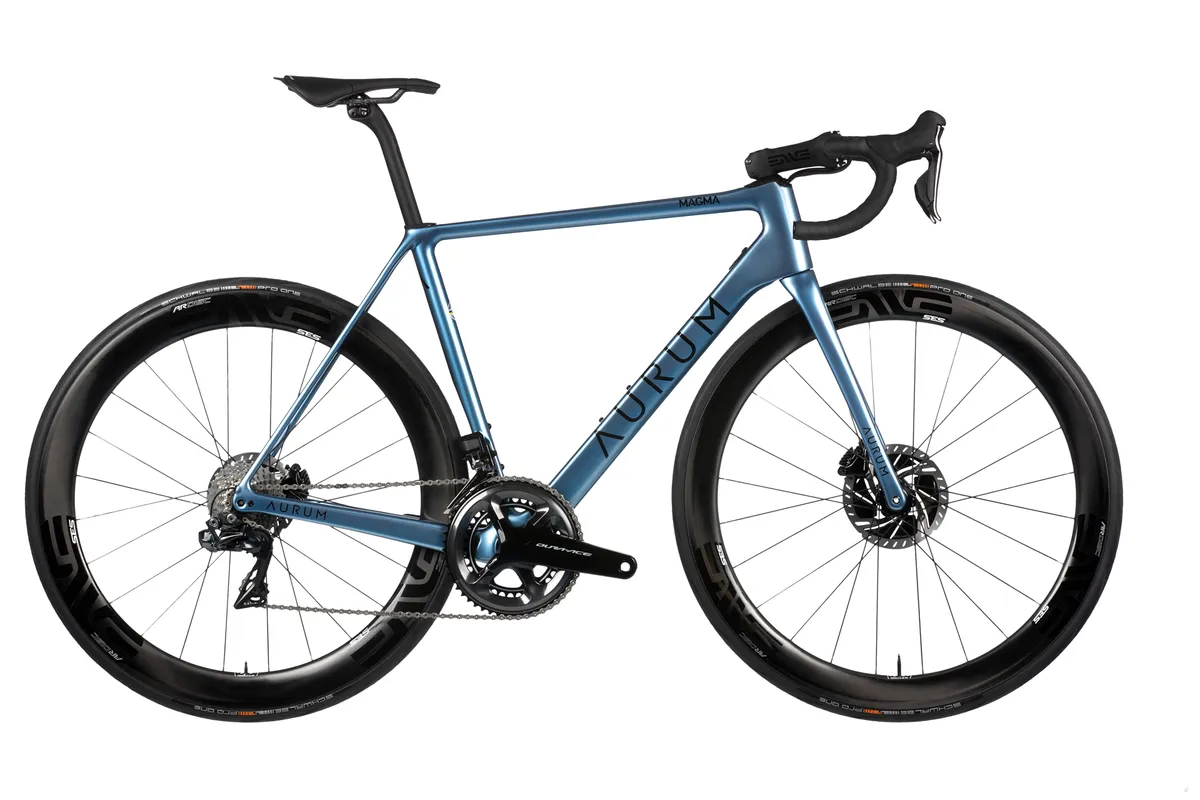
- Cranks: Shimano Dura-Ace (52/36)
- Rear mech: Shimano Dura-Ace Di2
- Front mech: Shimano Dura-Ace Di2
- Cassette: Shimano Dura-Ace (11-30)
- Chain: Shimano Dura-Ace
- Brakes: Shimano R9170 Dura-Ace
- Stem: Enve Road carbon
- Bars: Enve Road carbon compact
- Seatpost: Enve Carbon 20mm offset
- Saddle: Prologo Scratch M5 Nack
- Wheels: Enve SeS 3.4 disc
- Tyres: Schwalbe Pro One Evo 25mm
- Price: Starting from €9,799, full price list TBC
Aurum Magma Lightweight
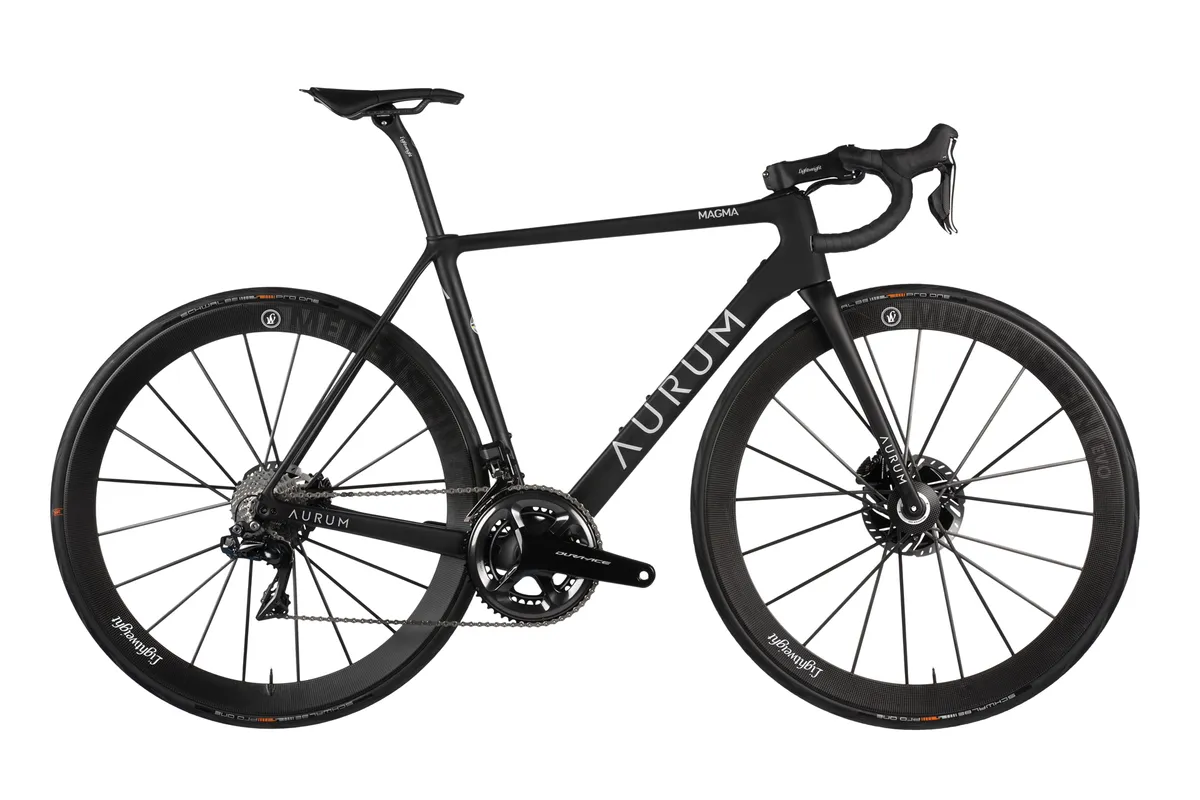
- Cranks: Shimano Dura-Ace (52/36)
- Rear mech: Shimano Dura-Ace Di2
- Front mech: Shimano Dura-Ace Di2
- Cassette: Shimano Dura-Ace (11-30)
- Chain: Shimano Dura-Ace
- Brakes: Shimano R9170 Dura-Ace
- Stem: Lightweight Bügelhalter
- Bars: Lightweight Kompakbügel
- Seatpost: Lightweight Leistungstråger
- Saddle: Prologo Scratch M5 Nack
- Wheels: Lightweight Meilenstein Evo disc
- Tyres: Schwalbe Pro One Evo 25mm
- Price: Starting from €9,799, full price list TBC
Aurum Magma Lightweight
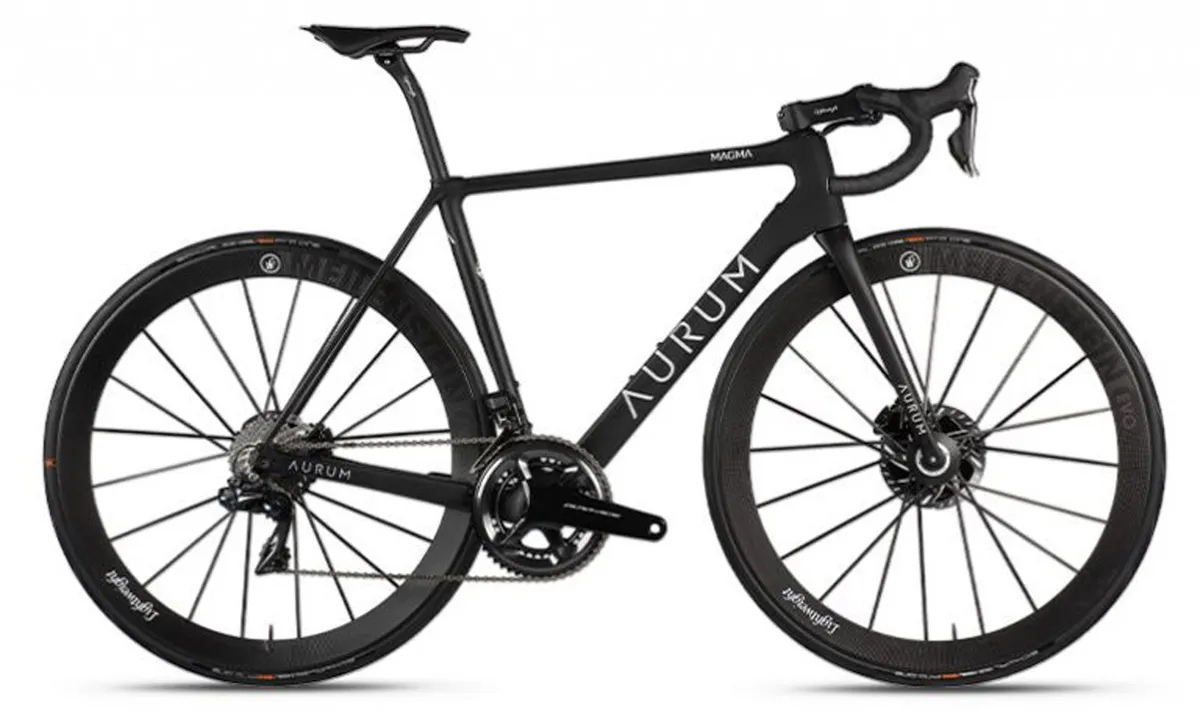
- Cranks: Shimano Dura-Ace (52/36)
- Rear mech: Shimano Dura-Ace Di2
- Front mech: Shimano Dura-Ace Di2
- Cassette: Shimano Dura-Ace (11-30)
- Chain: Shimano Dura-Ace
- Brakes: Shimano R9170 Dura-Ace
- Stem: Lightweight Bügelhalter
- Bars: Lightweight Kompakbügel
- Seatpost: Lightweight Leistungstråger
- Saddle: Prologo Scratch M5 Nack
- Wheels: Lightweight Meilenstein Evo disc
- Tyres: Schwalbe Pro One Evo 25mm
- Price: Starting from €9,799, full price list TBC
Aurum Magma Zipp

- Cranks: SRAM Red AXS power meter (48/35)
- Rear mech: SRAM Red eTap AXS
- Front mech: SRAM Red eTap AXS
- Cassette: SRAM Red XG-1290 (10-33)
- Chain: SRAM Red 12-speed
- Brakes: SRAM Red disc
- Stem: Zipp SL speed
- Bars: Zipp SL 70 Ergo
- Seatpost: Zipp SL Speed 20mm offset
- Saddle: Prologo Scratch M5 Nack
- Wheels: Zipp 303 NSW Tubeless disc
- Tyres: Schwalbe Pro One Evo 25mm
- Price: Starting from €9,799, full price list TBC

